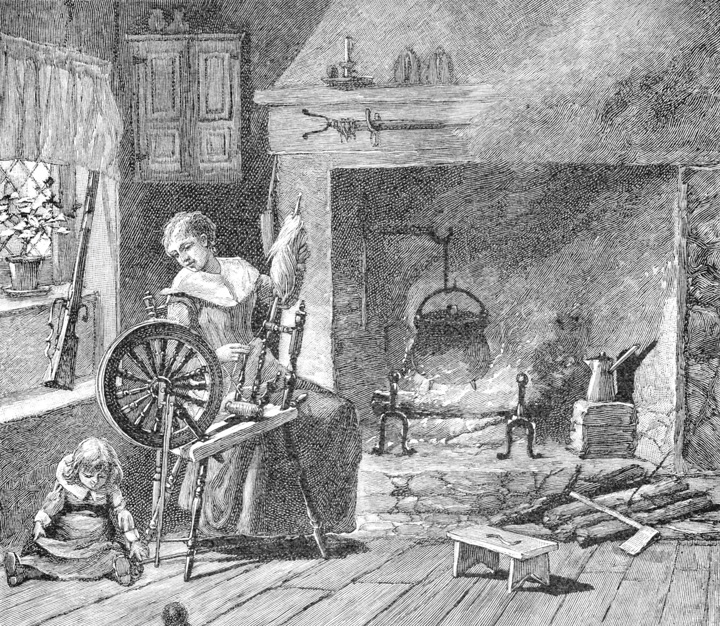This is “A Brief History of Education in the United States”, section 16.1 from the book Sociology: Comprehensive Edition (v. 1.0). For details on it (including licensing), click here.
For more information on the source of this book, or why it is available for free, please see the project's home page. You can browse or download additional books there. To download a .zip file containing this book to use offline, simply click here.
16.1 A Brief History of Education in the United States
Learning Objectives
- Explain why compulsory education arose during the 19th century.
- Outline some scholars’ criticisms of the rise of compulsory education.
EducationThe social institution through which a society teaches its members the skills, knowledge, norms, and values they need to learn to become good, productive members of their society. is the social institution through which a society teaches its members the skills, knowledge, norms, and values they need to learn to become good, productive members of their society. As this definition makes clear, education is an important part of socialization. Education is both formal and informal. Formal educationLearning that occurs in schools under teachers, principals, and other specially trained professionals. is often referred to as schooling, and as this term implies, it occurs in schools under teachers, principals, and other specially trained professionals. Informal educationLearning that occurs outside the schools, traditionally in the home. may occur almost anywhere, but for young children it has traditionally occurred primarily in the home, with their parents as their instructors. Day care has become an increasingly popular venue in industrial societies for young children’s instruction, and education from the early years of life is thus more formal than it used to be.
Education in early America was hardly formal. During the colonial period, the Puritans in what is now Massachusetts required parents to teach their children to read and also required larger towns to have an elementary school, where children learned reading, writing, and religion. In general, though, schooling was not required in the colonies, and only about 10% of colonial children, usually just the wealthiest, went to school, although others became apprentices (Urban, Jennings, & Wagoner, 2008).Urban, W. J., Jennings L., & Wagoner, J. (2008). American education: A history (4th ed.). New York, NY: Routledge.
To help unify the nation after the Revolutionary War, textbooks were written to standardize spelling and pronunciation and to instill patriotism and religious beliefs in students. At the same time, these textbooks included negative stereotypes of Native Americans and certain immigrant groups. The children going to school continued primarily to be those from wealthy families. By the mid-1800s, a call for free, compulsory education had begun, and compulsory education became widespread by the end of the century. This was an important development, as children from all social classes could now receive a free, formal education. Compulsory education was intended to further national unity and to teach immigrants “American” values. It also arose because of industrialization, as an industrial economy demanded reading, writing, and math skills much more than an agricultural economy had.

In colonial America, only about 10% of children went to school, and these children tended to come from wealthy families. After the Revolutionary War, new textbooks helped standardize spelling and pronunciation and promote patriotism and religious beliefs, but these textbooks also included negative stereotypes of Native Americans.
Source: Photo courtesy of Joel Dorman Steele and Esther Baker Steele, http://commons.wikimedia.org/wiki/File:Spinninginthecolonialkitchen.jpg.
Free, compulsory education, of course, applied only to primary and secondary schools. Until the mid-1900s, very few people went to college, and those who did typically came from the fairly wealthy families. After World War II, however, college enrollments soared, and today more people are attending college than ever before, even though college attendance is still related to social class, as we shall discuss shortly.
At least two themes emerge from this brief history. One is that until very recently in the record of history, formal schooling was restricted to wealthy males. This means that boys who were not white and rich were excluded from formal schooling, as were virtually all girls, whose education was supposed to take place informally at home. Today, as we will see, race, ethnicity, social class, and, to some extent, gender continue to affect both educational achievement and the amount of learning occurring in schools.
Second, although the rise of free, compulsory education was an important development, the reasons for this development trouble some critics (Bowles & Gintis, 1976; Cole, 2008).Bowles, S., & Gintis, H. (1976). Schooling in capitalist America: Educational reforms and the contradictions of economic life. New York, NY: Basic Books; Cole, M. (2008). Marxism and educational theory: Origins and issues. New York, NY: Routledge. Because compulsory schooling began in part to prevent immigrants’ values from corrupting “American” values, they see its origins as smacking of ethnocentrism. They also criticize its intention to teach workers the skills they needed for the new industrial economy. Because most workers were very poor in this economy, these critics say, compulsory education served the interests of the upper/capitalist class much more than it served the interests of workers. It was good that workers became educated, say the critics, but in the long run their education helped the owners of capital much more than it helped the workers themselves. Whose interests are served by education remains an important question addressed by sociological perspectives on education, to which we now turn.
Key Takeaways
- Until very recently in the record of history, formal schooling was restricted to wealthy males.
- The rise of free, compulsory education was an important development that nonetheless has been criticized for orienting workers in the 19th century to be disciplined and to obey authority.
For Your Review
- Write a brief essay in which you summarize the benefits and disadvantages of the rise of compulsory education during the 19th century.




